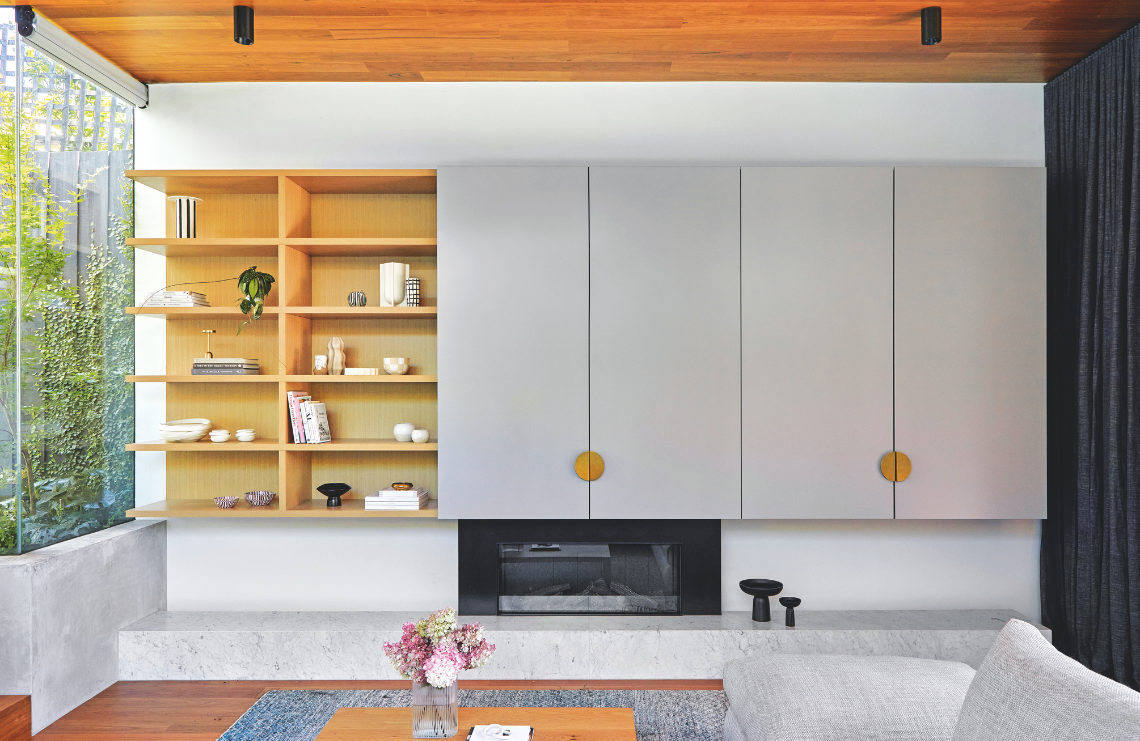When a family outgrows their cherished family home, they are often faced with a conundrum — to find a new abode or dedicate precious time and energy to redesigning and expanding their existing residence to meet their needs. When faced with this dilemma, the family of six — which includes two teenage boys, two young adult girls and their beloved pooch, Billy — that calls Open Shut House home chose to do the latter. The end result is the stunning picture-perfect dwelling you see here.
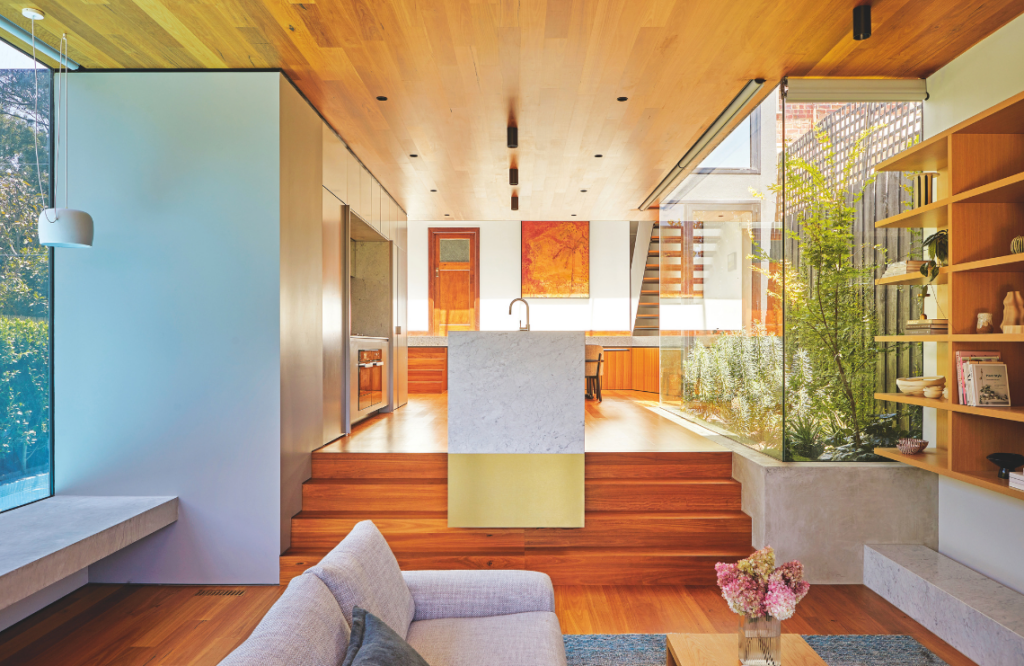
The property’s original building was one of a pair of semi-detached houses with Art Deco styling reflecting its Interwar era, which was protected by a heritage overlay. Solidly built, complete with original hand-plastered internal masonry walls, characterful cornices and timber windows and doors, the house had decidedly good bones. It only needed minimal intervention to be modernised.
“We wanted to create a home that fulfils the owners’ brief to have two generations of people under one roof, yet with the autonomy that each family member has to inhabit each space in their own way. Separated yet connected, private yet together,” explains Weian Lim, who is the director and project architect at WALA. And this they certainly did.
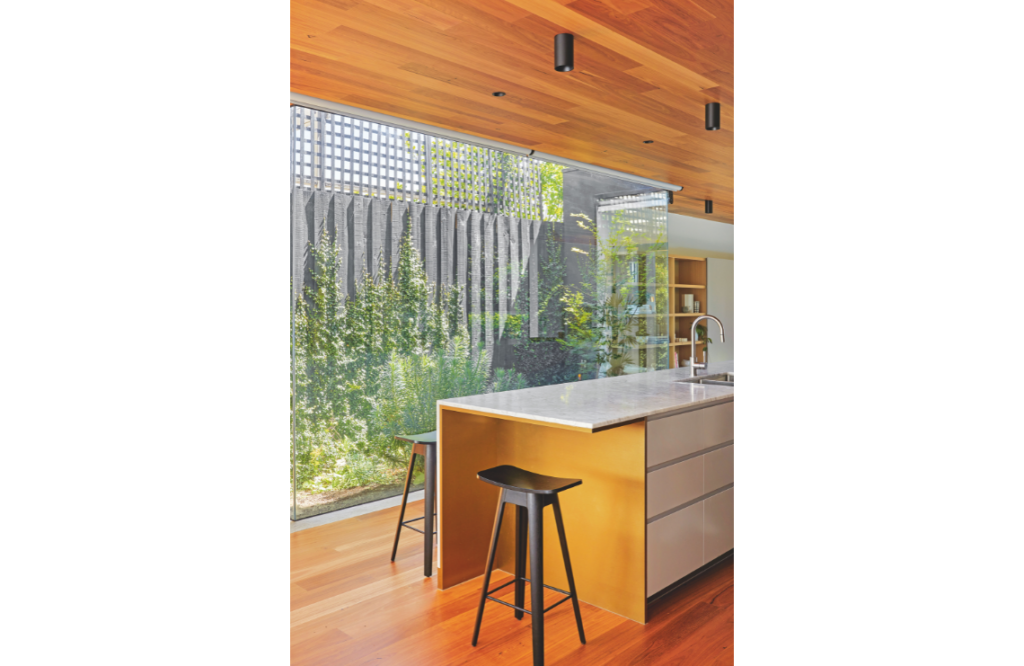
The newly updated home now boasts five bedrooms, four bathrooms, a formal lounge and a mezzanine study. It also features an open-plan communal living, kitchen and dining space, plus a self-contained laundry room and a butler’s pantry off the kitchen. Beyond the main building, the property features breathtaking front and rear gardens, a courtyard across from the kitchen, a pool and a single-car garage. While the new and improved home has expanded on its predecessor’s functional offerings, all new additions were designed to respect the heritage, character and scale of the period home. “Our studio took on the role of designing both the architecture and interiors to create a holistic design throughout.
The eventual multiple split levels of the extension demanded a focused effort from a builder and structural engineer, especially in dealing with a sloping site with multiple neighbouring structures along boundaries. The connection between old and new needed a ‘light touch’ and creative solutions were workshopped and employed to tackle the challenges of preserving and extending a period building,” Weian elaborates.
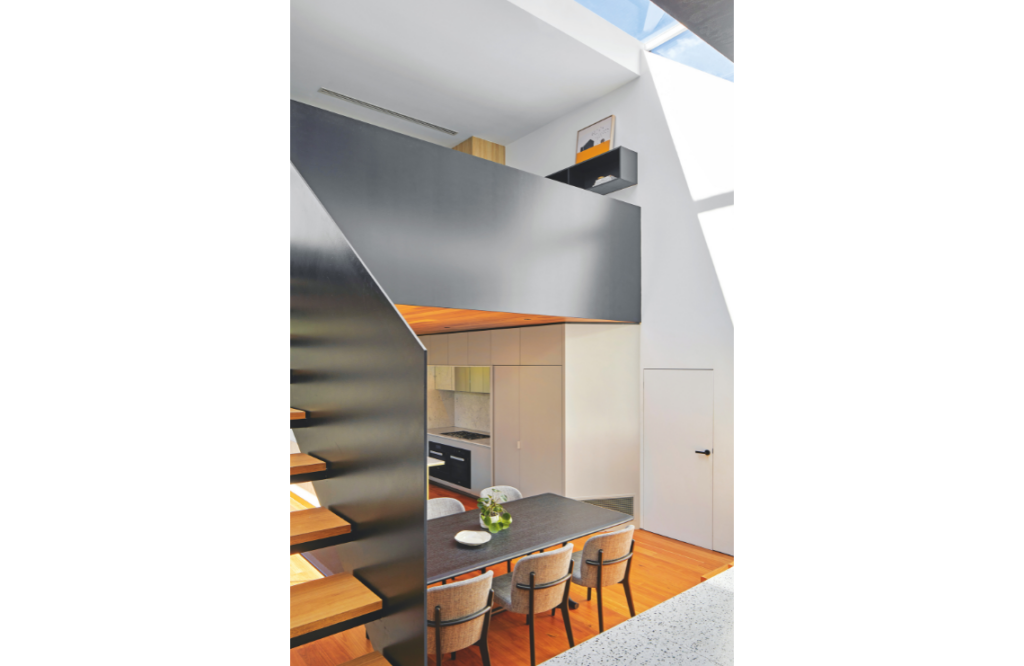
The home’s new extension was designed to be future-proof and is equipped to cater to the ever-changing needs of individual family members, particularly the four children. “The new design removes the parents’ quarters from the children’s by having the bedrooms housed in separate buildings connected by a central atrium,” Weian shares. This unique atrium acts as the pinwheel that ties the various spatial functions, floor levels, building forms and materials, and the old and new together in perfect harmony. It makes sense that the dining table is located right at the centre of this section, as this is where the family gather at the end of each day to relax, unwind and share a meal.
The drastic fall of the land on which this home stands presented challenges as well as opportunities to exploit. Ultimately, the new addition was designed to preserve the front building’s heritage qualities by utilising the fall of the land to tuck itself behind and below the existing roofline. The interior responds to the land’s natural fall by cascading a series of tiered living spaces towards the backyard. The space is momentarily compressed again in the kitchen, before the floor level changes once more and the perception of space swells in the sunken living room and gardens beyond.
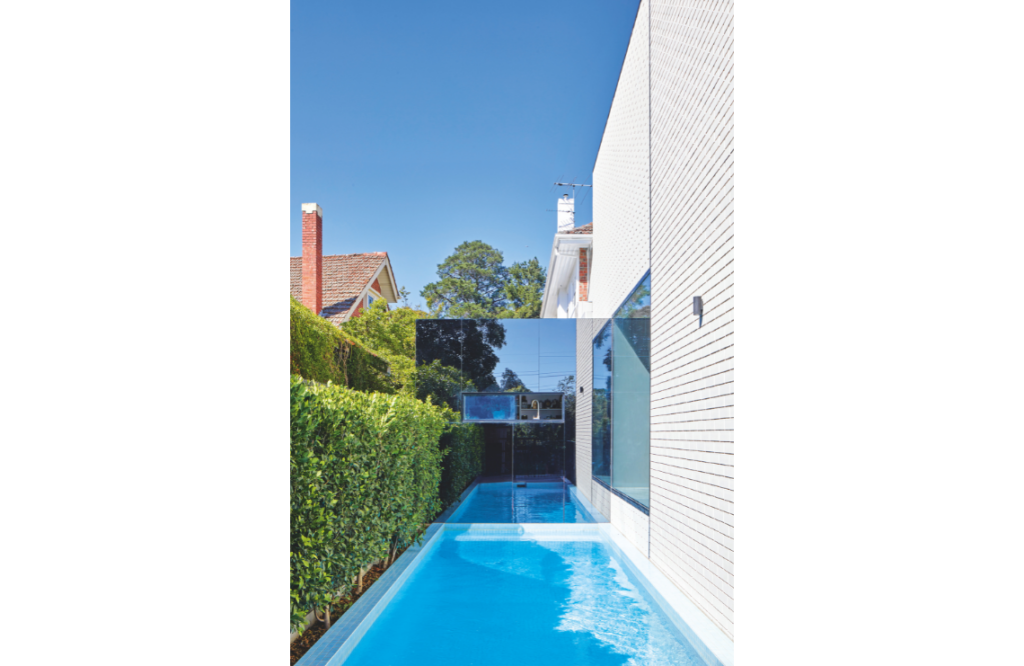
Open Shut House’s materials and finishes — predominantly timber, steel, concrete and brick — were chosen carefully to create a stark contrast to those of the original 1920s structure. The living room’s timber ceiling and flooring succeed in lending warmth to the space. The movement between the older, austere spaces of the period building towards the more textured interiors of the renovated spaces is also delineated by the clear difference in materials. Natural light permeates this entire section thanks to openings via skylights, windows and courtyards, so each tiered level is bright, sunny and inviting all day long. The rear section’s design was guided by passive design principles to keep the new structure warm in the winter months and cool in the summer heat. “The new addition is unashamedly contemporary; a clear departure from the architecture of its predecessor in order to distinguish itself and create a counterpoint to the old building,” Weian notes.
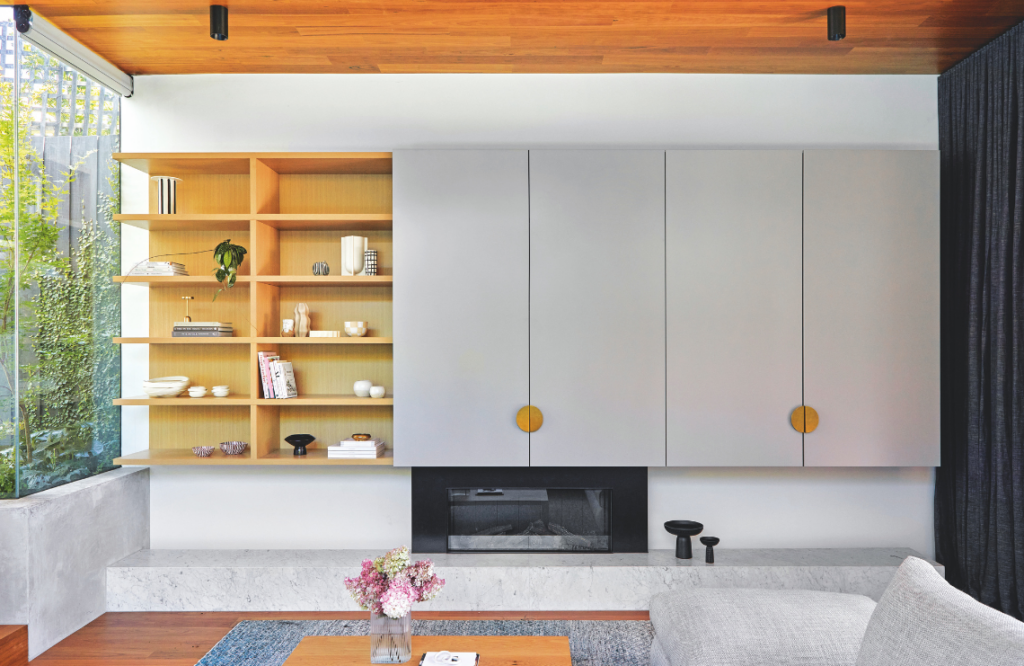
The exterior, on the other hand, is clad in materials that match the original structure in both colour and tone. While creamy Miro La Paloma bricks were chosen to tie in with the original home’s off-white solid-plastered masonry, the blackbutt timber replicates the warmth from the exposed red brick and terracotta roof tiles. Texture and visual interest are added to the home’s exterior through the Miro bricks along the exterior sheer wall facing the pool, which are arranged in both vertical and horizontal stretcher bond patterns.
“This project exemplifies how a well-thought-out design strategy can preserve and prolong the life of a 100-year-old heritage dwelling and enable it to adapt to the evolving lifestyles of its occupants over time with a new building extension that feels intuitive and robust,” explained Weian when asked what makes this project special. “The success of this project is reflected in the seamless marriage of the
old and the new — how each building has its own distinctive style and beauty, yet they come together effortlessly as a cohesive whole.” We can’t help but agree!

